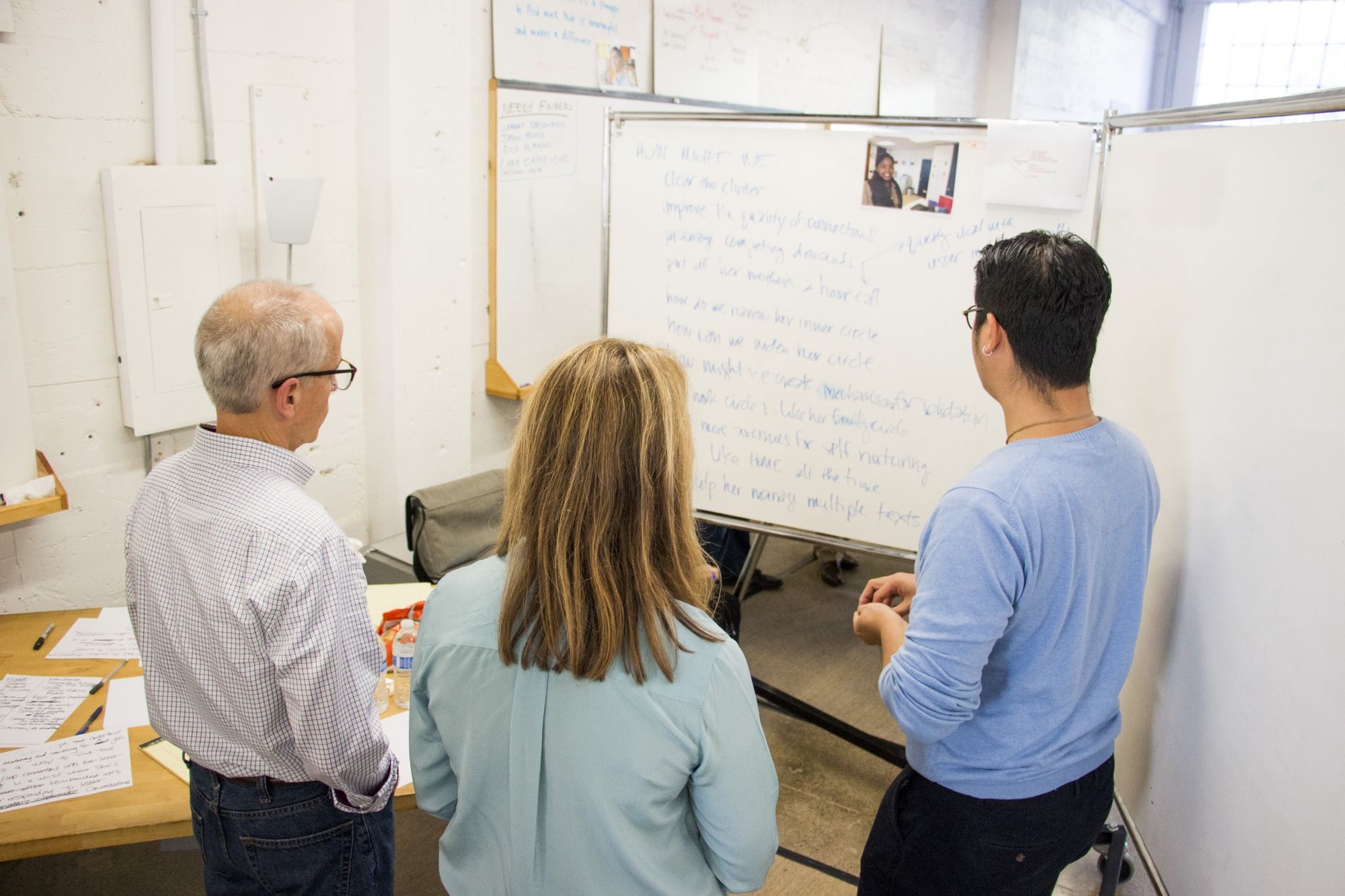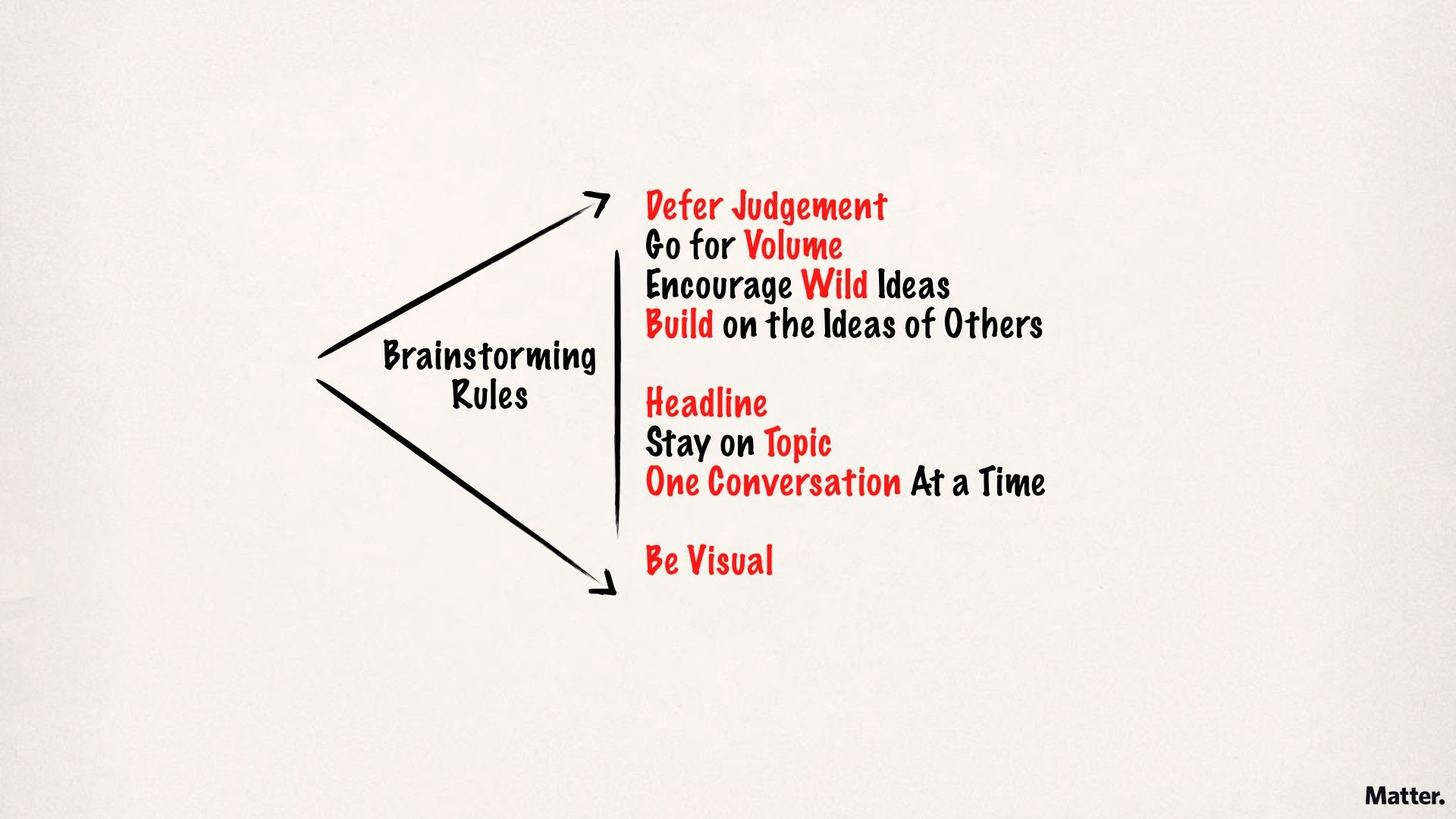Be Positive & Defer Judgment

Key Takeaways from Brainstorming Collaboratively
A few weeks ago, I participated in my (long overdue) first design thinking bootcamp at Matter. I‘ve been working at Matter for a little over a year now, and though I’ve immersed myself in the design thinking culture and mentality, it has mainly been through vicarious observation through our entrepreneurs.
Each Matter class gets to go through a one-week long, intensive, design thinking “bootcamp”. This time, Matter Managing Partner, Corey Ford led a bootcamp with our existing and new partners. I had the great privilege of participating with Heads of Digital, Directors of Strategy, Producers, and more from KQED, The Associated Press, The McClatchy Company, AH Belo, and Community Newspaper Holdings, Inc.
I’m not going to go into too much detail about the program because some of you out there may end up participating in bootcamp sometime, and much of the value is in not knowing what to expect. I will tell you that we spent most of the time working in small groups with folks we didn’t know from all different places. Together, we built a desirable, feasible, and viable venture from the ground up in three days.
Throughout this process, we brainstormed. It seems simple, but I found that a brainstorm is a big indicator of how team dynamics are going, and as Corey reminded us—65% of ventures fail due to preventable team dynamics issues.
The groundwork for a good brainstorm is set in the structure, and the ability of team members to commit to the rules of that structure. We call brainstorming “flaring.” This phase’s goal is to be generative. You want to get 50–100 ideas out of this session in 30 minutes. Things that hinder being generative include: self-editing, editing others, judging ideas, etc. So to prevent this, there are some rules that Matter adopted from the Stanford D. School:

The number one most important thing I learned on how to make an effective brainstorm is that deferring judgement is necessary. On the negative side, this usually means throwing feasibility concerns out the window. Corey told us, “Encourage wild ideas because often times, the great idea is just adjacent to the crazy one.”
One of my team’s crazy ideas was “carrier pigeons”. Instead of saying “that’s not a good idea” or “that’s silly,” we treated that idea equal to every other idea on the whiteboard for this session. The interaction between teammates should be “Yes, and,” which stems from improv games, but has become increasingly relevant for good team dynamics in business. Remember, the goal isn’t to find the best idea, it’s to be generative.
Though it may not seem like it, positive judgment is a hindrance to being generative as well. We often found ourselves circling good ideas, or wanting to elaborate on something we were excited about. It’s a common tendency to want to commit to an idea you like, but even affirmation or approval counts as selection or “focusing”. This gets tricky because you want to build off positive energy, but it’s important to do so in a way that is divorced from selection.
The second most important thing to having a good brainstorm is having a positive facilitator. This is someone who makes sure everyone feels heard, documents every idea, and stokes the fires when the energy gets low. It’s a tough job and requires some multitasking. We rotated facilitators between the four of us in the 30-minute time period to keep things going.
Throughout the entire week, we used this method of brainstorming for everything from what our name should be to what our sustainable competitive advantage is. We got better and better, and more collaborative every time.
So how do you take this into the real world? It’s easy to take an hour a day to brainstorm when it’s for a dedicated workshop, but it’s a lot easier said than done to incorporate it into our everyday processes. Even at Matter, where we teach this stuff.
So over the next few weeks, I’m committing to leading our team through at least three brainstorms. We’re going to flare before focusing on issues we have been stuck on. I’m willing to bet that we’ll get further on this process in an hour than we have in the past year.

